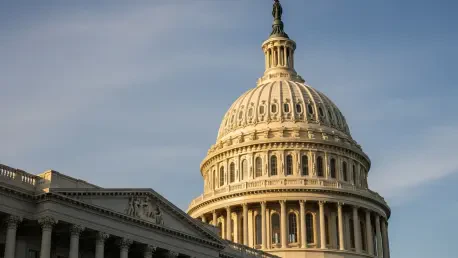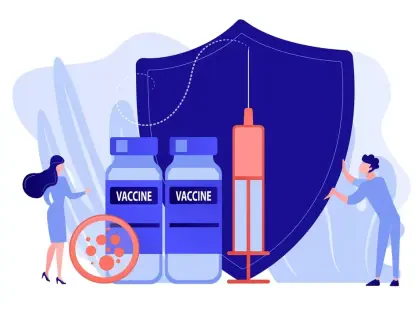Imagine hundreds of thousands of federal employees waking up to uncertainty, their livelihoods halted by a government shutdown sparked by congressional gridlock, and as of October 1, this scenario became a harsh reality for many with no immediate resolution in sight. The financial and emotional toll on these public servants—either furloughed or working without pay—has ignited a powerful response from communities, states, and organizations. This roundup dives into diverse perspectives, tips, and insights from various sources to highlight how federal workers are navigating this crisis with solidarity and support. The aim is to showcase the multifaceted efforts sustaining these employees and to provide actionable guidance for those affected.
Community Voices: Grassroots Efforts and Collective Strength
Crowdsourcing Solutions: A Digital Lifeline
Insights from federal employee networks reveal a remarkable initiative: a crowdsourced spreadsheet compiled by a coalition of current and former civil servants. This digital tool serves as a vital resource hub, listing assistance options like no-interest loans from financial institutions such as USAA. Community members emphasize how this platform fosters a sense of unity, often likening the effort to “crowdsurfing”—a metaphor for lifting each other up during tough times.
Beyond financial aid, the spreadsheet connects workers to peer support through weekly empowerment calls hosted by groups like 27 UNITED. Feedback from participants highlights the emotional relief these calls provide, offering a space to share struggles and solutions. The consensus among users is that such grassroots efforts are indispensable, bridging gaps left by federal inaction.
Many sources note the practical challenges of navigating a shutdown, from delayed bills to mounting stress. Yet, the collective spirit reflected in these digital tools stands out as a beacon of hope. Federal workers consistently stress that sharing resources and experiences helps mitigate the isolation often felt during such crises.
Peer Perspectives: Emotional and Practical Challenges
Differing views emerge on the emotional impact of the shutdown among federal employee forums. Some describe pervasive anxiety over uncertain paychecks, while others find strength in community-driven initiatives. These contrasting sentiments underline the dual nature of the crisis—financial strain paired with a renewed sense of camaraderie.
Tips gathered from online discussions suggest maintaining open communication with creditors and seeking local support groups. Many federal workers advocate for documenting expenses meticulously during this period, a strategy seen as crucial for future financial recovery. This advice reflects a pragmatic approach amid widespread uncertainty.
A recurring theme across these perspectives is the importance of mental health resources. Community members frequently recommend leveraging free counseling services or virtual meetups to cope with stress. Such insights reveal a holistic view of survival, addressing both material and psychological needs during the shutdown.
Governmental and Local Support: Bridging the Gap
State Initiatives: Maryland and Beyond
State-level responses offer a critical perspective on filling federal voids, with Maryland’s Federal Shutdown Loan Program under Governor Wes Moore gaining attention. Sources familiar with the program describe it as a lifeline, providing a one-time, no-interest $700 loan to unpaid federal workers still required to report to duty. This initiative is often praised for its immediate impact on affected households.
Local efforts in areas like Prince George’s County, Maryland, and Alexandria, Virginia, also draw positive feedback for tailored resources aimed at furloughed residents. Community leaders in these regions highlight the importance of localized aid, noting that proximity allows for quicker, more relevant support. However, some caution that these measures may not suffice if the shutdown persists.
Critics of state interventions point to potential budget strains as a concern. Observations from fiscal analysts suggest that prolonged reliance on such temporary programs could overtax state resources, especially in regions with high concentrations of federal employees. This perspective adds a layer of complexity to the otherwise lauded efforts, urging a balance between short-term relief and long-term planning.
Local Feedback: Effectiveness and Limitations
Voices from local communities reveal mixed opinions on the effectiveness of these governmental lifelines. Residents in affected areas appreciate the rapid response but express worry over the scalability of such programs. Some note that smaller localities may struggle to match the resources of larger states like Maryland, creating disparities in support.
Tips from local advocates include actively seeking out county-specific announcements for aid opportunities. They also advise federal workers to engage with municipal offices directly for personalized assistance, as these entities often have underutilized funds or programs. This practical guidance aims to maximize access to available help.
A broader concern raised by community organizers is the risk of dependency on patchwork solutions. Many argue that while local and state support is vital, it cannot replace federal accountability. This viewpoint pushes for systemic change alongside immediate relief, reflecting a nuanced take on governmental roles during crises.
Nonprofit Contributions: Sustaining Through Grants and Guidance
Organizational Support: Grants as a Safety Net
Nonprofit organizations provide another angle on shutdown support, with entities like the Federal Employee Education and Assistance Fund preparing to distribute assistance grants. Input from nonprofit representatives indicates that these grants, often around $100 historically, become crucial if the shutdown extends beyond payday. Their role is frequently described as a safety net for the most vulnerable workers.
Additional resources compiled by groups like the Partnership for Public Service also receive commendation for accessibility across regions. Feedback from federal employees highlights how these curated lists simplify the search for aid, saving time during a stressful period. Nonprofits are often seen as indispensable partners in this ecosystem of support.
However, some nonprofit leaders express concern over funding limitations and scalability. Their insights suggest that while grants and guidance are impactful, they cannot sustain large numbers of workers long-term without increased donations or federal intervention. This limitation prompts a call for diversified support mechanisms to ensure broader coverage.
Critical Views: Sustainability of Nonprofit Aid
Differing opinions surface on the adequacy of nonprofit contributions during prolonged shutdowns. While many federal workers value the immediate relief, others question whether these organizations can keep pace with growing demand. This skepticism underscores a need for robust backup plans beyond charitable efforts.
Recommendations from nonprofit advocates include early application for grants to avoid delays, as funds often deplete quickly. They also suggest pairing nonprofit aid with other resources, such as state loans, to create a more comprehensive safety net. These tips aim to optimize the limited but critical support available.
A wider perspective from policy watchers within the nonprofit sector emphasizes the importance of public awareness to boost funding. They argue that greater visibility for these programs could attract more donors, easing the strain on existing resources. This forward-thinking approach seeks to address sustainability challenges head-on.
Advocacy and Policy Concerns: The Fight for Stability
Backpay Uncertainty: A Looming Threat
Advocacy efforts offer a distinct lens on the shutdown’s broader implications, particularly around backpay. Reports circulating among federal worker coalitions indicate White House plans to potentially bypass a 2019 law guaranteeing backpay post-shutdown. Advocates describe this uncertainty as a significant blow to financial security, fueling widespread concern.
Input from employee coalitions reveals a proactive history of resistance, including a September petition with over 2,000 signatures opposing harmful workforce policies in congressional resolutions. This activism is often cited as a testament to federal workers’ determination to protect their rights, blending immediate survival with long-term policy goals.
Some policy analysts warn that bypassing backpay guarantees could set a dangerous precedent, eroding trust in federal employment. Their observations call for stronger legislative safeguards to prevent such outcomes. This critical viewpoint adds depth to the advocacy narrative, highlighting systemic issues at play.
Advocacy Strategies: Voices for Change
Diverse strategies emerge from advocacy groups on how to address these policy threats. Many recommend sustained pressure on lawmakers through petitions and public campaigns to secure backpay and prevent future shutdowns. This approach is seen as essential for maintaining employee morale and stability.
Other perspectives focus on educating federal workers about their rights under existing laws. Tips include staying informed via coalition updates and joining advocacy networks for collective strength. These suggestions aim to empower employees to navigate both current and potential policy challenges effectively.
A balanced view from within advocacy circles acknowledges the difficulty of balancing immediate needs with policy fights. They note that while survival strategies like accessing loans are vital, the push for systemic change remains equally important. This dual focus encapsulates the complex battle federal workers face during shutdowns.
Key Takeaways: Solidarity and Support Systems
Reflecting on the varied insights, the strength of community solidarity stands out as a unifying theme. Grassroots tools like crowdsourced spreadsheets, state programs such as Maryland’s loan initiative, and nonprofit grants collectively demonstrate a robust support network for federal workers. These efforts, though diverse, share a common goal of mitigating the shutdown’s harsh impact.
Comparative analysis of opinions shows that while grassroots and local efforts excel in immediacy and emotional support, state and nonprofit interventions provide more structured financial relief. However, concerns over sustainability—whether of state budgets or nonprofit funds—suggest a need for federal resolution. This blend of perspectives paints a comprehensive picture of the current landscape.
Practical advice for affected workers includes tapping into listed resources promptly, participating in peer empowerment calls for emotional support, and advocating for policy protections like guaranteed backpay. Financial preparation, such as budgeting for essentials and communicating with creditors, also emerges as a critical tip across sources. These actionable steps aim to equip federal workers with tools to endure the ongoing crisis.
Closing Thoughts: Reflecting on Resilience and Next Steps
Looking back, the collective response to the government shutdown stands as a powerful testament to human resilience. Federal workers, supported by communities, states, and nonprofits, navigated uncharted financial and emotional challenges with remarkable unity. The diverse opinions and strategies shared by various stakeholders illuminated both the strengths and limitations of these efforts.
Moving forward, federal employees are encouraged to continue leveraging available resources while pushing for legislative changes to prevent future disruptions. Exploring additional community-driven initiatives and staying engaged with advocacy coalitions offer a pathway to sustained support. Building personal emergency funds is also advised as a proactive measure against potential shutdowns down the line.
Beyond individual action, a broader societal role emerges as crucial—raising awareness about the plight of federal workers and contributing to assistance funds where possible. These steps, grounded in the lessons learned, aim to ensure that public servants will never face such crises in isolation, fostering a lasting commitment to their well-being.









